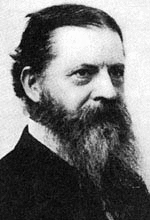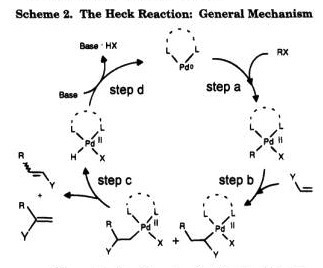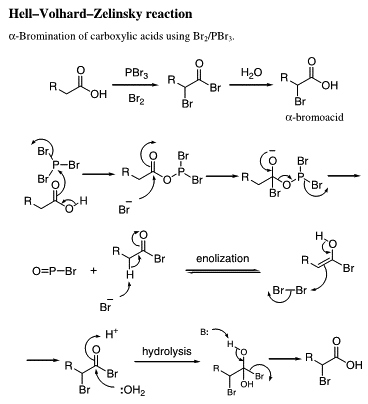Marc Abrahams's Blog, page 551
September 1, 2012
Pseudo-nitzschia!
This snazzy lettering is how the Monterey Bay Aquarium Research institute presents its web site about pseudo-nitzschia:
They go on to say:
In order to fully appreciate Pseudo-nitzschia, it is helpful to gain an understanding of diatoms as a general entity. This “Diatoms” link includes other links to learn more about general information (diatom terminology here!), growth & reproduction, silicon use, collection & study, and biological significance.
BONUS: Work done there to explain what happened to the birds in Alfred Hitchcock’s movie The Birds

August 31, 2012
A Robot plays “Operation” at Johns Hopkins
In this music video, a robot at the Johns Hopkins University Laboratory for Computational Sensing and Robotics (LCSR) plays the game Operation. The video also features Featuring PhD students Carol Reiley, Tom Tantillo and Kel Guerin.
(HT Erica Emmons)

Oddity by Acronym: EAT in the Brain to Odd Curtail Sex
This week’s Oddity by Acronym example comes from this new study:
“Evaluation of electrical aversion therapy for inappropriate sexual behaviour after traumatic brain injury: a single case experimental design study,” Bert Jan ter Mors, Caroline M van Heugten, Peter N van Harten, BMJ Case Reports, epub August 30, 2012.
“Electrical aversion therapy (EAT) is a behavioural therapeutic option… We conclude that EAT was effective in this patient with inappropriate sexual behaviour due to severe brain injury.”

How do students spend their time?
A new study raises questions:
“How Students Spend Their Time,” Andrea L. Welker [pictured here] and Bridget Wadzuk, J. Prof. Issues Eng. Educ. Pract., vol. 138, 2012, pp. 198-206. the authors, at Villanova University, Villanova, Pennsylvania, explain:
“An analysis was performed of how students spend their time … the students self-report their use of time and it is possible that their perceptions are not accurate.”
(Thanks to investigator Tom Gill for bringing this to our attention.)
BONUS: Dr. Welker also recently wrote this unrelated study:
Welker, A., Barbis, J., and Jeffers, P. “A Holistic Side-by-Side Comparison of Pervious Concrete and Porous Asphalt,” Journal of the American Water Resources Association, in press
BONUS: A press release about the two papers
BONUS QUESTION: What percentage of their time do students spend in reading the study “How Students Spend Their Time”?
BONUS QUESTION: After students have read the study “How Students Spend Their Time”, in what ways do they spend their time differently?

August 29, 2012
The Heck Reaction vs. the Hell Reaction
Again this year, there is no winner in our essay contest to address the question: “Which Is Better, the Heck Reaction or the Hell Reaction?” The contest entrants and the more numerous potential entrants were uninspired by the two info sources we suggested:
“Recent Developments and New Perspectives in the Heck Reaction,” Walter Cabri and Ilaria Candiani, Accounts of Chemical Reactions, vol. 28,no. 1, 1995, pp 2–7.
“Hell-Volhard-Zelinsky reaction,” in Name Reactions, 2006, pp. 291-2.

August issue of mini-AIR
 The August issue of mini-AIR just went out. Topics include:
The August issue of mini-AIR just went out. Topics include:
The traditional rivalry between fire ants and carrion flies
“Automatic Recognition of Eye Blinking in Spontaneously Occurring Behavior”
and more
It also has info about the upcoming release of the new book, and about the Ig Nobel ceremony and lectures.
Mel [pictured here] says, “It’s swell.” (mini-AIR is the simplest way to keep informed about Improbable and Ig Nobel news and events. Just add yourself to the mini-AIR list, and mini-AIR will be emailed to you every month)

August 28, 2012
Learning Organizational Learning
 The concepts of Organizational Learning (OL) and Learning Organisation (LO) have been prevalent in the management literature for several decades [1] [2] – but exactly what, if anything, differentiates Organizational Learning (OL) from Learning Organisation (LO)?
The concepts of Organizational Learning (OL) and Learning Organisation (LO) have been prevalent in the management literature for several decades [1] [2] – but exactly what, if anything, differentiates Organizational Learning (OL) from Learning Organisation (LO)?
Answers are to be found in the SCMS Journal of Indian Management, January – March, 2012, where authors Dr. Kalyani Mohanty and Professor Subhasree Kar (pictured above) explain the subtle differences. (page 38 in the .pdf)
“ ‘Organizational Learning’ and ‘Learning Organization’ are the two terms used interchangeably, if not as synonyms.The two most common ways to distinguish between organizational learning and learning organization in existing literature are:
That learning organization is a form of organization while organizational learning is an activity or processes (of learning) in organizations. Organizational learning is a concept used to describe certain types of activity that take place in an organization while the learning organization refers to a particular type of organization in and of itself (Tsang, 1997, DiBella, 1995, Elkjaer, 1999, Finger and BuÈrgin Brand, 1999, Lundberg, 1995).”
Further reading:
The concept of Organizational Learning (OL) has a dedicated society : The Society for Organizational Learning (SoL) which publishes its own journal Reflections: The SoL Journal where you can learn more about Learning Organization (LO), in Volume 4, Number 3 and Volume 11, Number 3.

Fun psychoanalysis exercise: Analyse “Effectiveness—Approved”
If you are a psychoanalyst, here’s a fun, therapeutic exercise to keep your basic skills sharp: Apply your psychoanalytic skills to analyze a simple statement.
Where the statement came from: The statement was given to the public by the American Psychological Association (APA).
 The statement: It’s a simple statement — about 2400 simple words long, clarified with an additional 4300 simple words of notes and references. The APA calls it “Resolution on the Recognition of Psychotherapy Effectiveness – Approved August 2012“. Here’s how it begins and ends;
The statement: It’s a simple statement — about 2400 simple words long, clarified with an additional 4300 simple words of notes and references. The APA calls it “Resolution on the Recognition of Psychotherapy Effectiveness – Approved August 2012“. Here’s how it begins and ends;
INTRODUCTION: Council voted to adopt as APA policy the following Resolution on the Recognition of Psychotherapy Effectiveness:
WHEREAS: psychotherapy is rooted in and enhanced by a therapeutic alliance between therapist and client/patient that involves a bond between the psychologist and the client/patient as well as agreement about the goals and tasks of the treatment (Cuijpers, et al., 2008, Lambert, 2004; Karver, et al., 2006; Norcross, 2011; Shirk & Karver, 2003; Wampold, 2007);…
[The resolution continues with another 26 simple paragraphs, each of which starts with the word "Whereas".]
[The resolution finishes (before it adds on that additional 4300 words) with a paragraph that begins: "THEREFORE: Be It Resolved that, as a healing practice and professional service, psychotherapy is effective and highly cost-effective...."]
The exercise: Use your psychoanalytic knowledge and skills to analyze what kind of person* made that statement. What kind of person* gives 27 different whereases before getting to the point? What kind of person* reaches a tidy, perfect conclusion after expressing all those 27 whereases? What kind of person does that kind of person* expect to agree with that simple conclusion with its 27 whereases?
Bonus exercise: What simple adjectives would you use to descrive the person* who made the simple statement?
* Okay, it’s not really a person. It’s a Council. But for purposes of this exercise, assume that that committee has a coherent, human-based personality.
(Thanks to investigator Mike Rapoli for bringing this to our attention.)
NOTE: Yes, we are aware that psychoanalysis and psychotherapy are not necessarily the same, and also that ‘analyse’ and ‘analyze’ are two different spellings. We are also aware that certain kinds of personalities write voluminous letters about such things (and particular kinds of personalities repeatedly write voluminous letters about such things), and others do not.

The Golfball Index (UPDATED: August 2012)
 Although the month started slowly (there was just one new golfball patent in the first week) the index quickly regained lost ground, and soon reached one of the highest levels this year. (Showing a significant improvement on July, when the US patent office issued just 7 new patents for golfballs.) August 2012 ended with no less than 11.
Although the month started slowly (there was just one new golfball patent in the first week) the index quickly regained lost ground, and soon reached one of the highest levels this year. (Showing a significant improvement on July, when the US patent office issued just 7 new patents for golfballs.) August 2012 ended with no less than 11.
• Variable density core golf balls
• Casing layer for polyurethane-covered and polyurea-covered golf balls
• Golf balls having at least two core layers formed from HNP compositions
• Golf balls having two core layers formed from HNP compositions
• Multi-layer cover golf ball having non-ionomeric intermediate cover layer

August 27, 2012
Graphene From Garbage (and Girl Scout cookies and bugs)
Biscuits, rubbish and bugs in Texas raise hopes that Britain will grow a lucrative new techology-based empire soon, rather than just eventually. This is all about getting usable amounts of graphene – the two-dimensional form of carbon. An American experiment, so goofy-sounding that it has drawn little attention, points towards a cheap way of obtaining what is now a scarily expensive substance.
Scientists had long known that graphene exists, and that it is common. The grey stuff in pencils is made of multitudinous layers of graphene, sticking to each other. When you scribble, a gob of layers slides away, clinging thereafter to your sheet of paper. A few years ago…
So begins this week’s Improbable Research column in The Guardian.
BONUS: Video of Jim Tour‘s cookies/rubbish/bugs experiment at Rice University:

Marc Abrahams's Blog
- Marc Abrahams's profile
- 14 followers



























